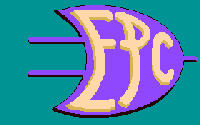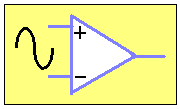

 Course Description
Course Description
Electronics Process Control is a program offered through extension services at UCC. Each of the four units of the program are briefly descibed below. The course is offered evenings and Saturday mornings. It takes approximately one month to complete one level of a Unit; there are 3 levels in each Unit.
The course is designed to provide both a theoretical and a practical education. The theory time is approximately one-third and lab time is two-thirds. You are given a textbook and min-lab trainer to use while you are taking the course. A kit of electronics parts is yours to keep.
UNIT 1 Basic Electronics

Unit one is for the beginner in electronics. You will learn all the fundamentals of circuitry and
circuit assembly. The practical portion of the course also teachs troubleshooting and measurement
techniques.
Go to more details on Unit 1
UNIT 2 Analog Electronics

In unit two, you will learn how amplifiers work. This unit also includes how input and output
sensors are connected to amplifiers and contol circuits.
Go to more details on Unit 2
UNIT 3 Digital Electronics

The subject of Unit three is the fundamentals of digital circuitry:
digital logic, gates, displays and memory.
Go to more details on Unit 3
UNIT 4 Microprocessors

The fourth unit is a special application of Digital Electronics. In it you
will learn how to program in Machine Language - the native language of Micropressors, and how
to interface inputs and outputs to control systems.
Go to more details on Unit 4


Level 1: Linear Amplifiers (36 hours)
a) Bipolar and Field Effect transistors
b) Op-Amps
c) Inverting and Non-inverting Amplifiers
d) Summing and Difference Amplifiers
e) Comparators
f) Instrumentation Amplifiers
Level 2: Interfacing Sensors (36 hours)
a) Thermistors and Thermocouples and Silicon Temperature Sensors
b) Temperature alarms
c) Optical proximity sensors
d) Induction transducers
e) Hall Effect sensors
f) Capacitive and Inductive proximity sensors
Level 3: Control Loops (36 hours)
a) Loop feedback
b) Hysteresis Amplifiers
c) On/Off Controllers
d) Proportional Controllers
e) Integral Controllers
f) Derivative Controllers
f) P.I.D. Controllers
Go to top of Electronics Process Control

Level 1: Combinational Logic Circuitry (36 hours)
a) Gate equivalents of Relay Control Logic
b) Input/Output logic levels
c) Machine drilling logic controller
d) Solid state timers
e) Ignition Controllers
Level 2: Synchronous Circuits (36 hours)
a) Latches, Flip Flops
b) Shift Registers, Counters and Decoders
c) Conveyor controllers
d) Magnitude comparators
e) Electronic Tachometers
Level 3: Digital Signal Conditioning (36 hours)
a) TTL to CMOS interfacing
b) Opto-isolators
c) Pulse-width and frequency modulation
d) Parallel to serial data conversion
e) Analog to Digital, Digital to Analog Conversion
Go to top of Electronics Process Control

Level 1: I/O Ports (36 hours)
a) 8085 block diagram
b) Programming and Flow Charts
c) Hexadecimal numbering system
d) Programming the 8156 Port
e) 8085 instruction set
f) Microprocessor process controllers
Level 2: I/O Control (36 hours)
a) Logical and Arithmetic Functions
b) Memory map of input and output tables
c) PLC functions and emulation
d) Switch contact recorder
e) Keypad inputs and display outputs
Level 3: Closed Loop Control (36 hours)
a) Closed Loop PID circuits
b) Pulse Width Modulated control
c) Proportional-Integral PWM control
d) Analog to Digital, Digital to Analog conversion
e) Programmable Analog gain
f) Proportional-Derivative control
Go to top of Electronics Process Control
Go to David Charbonneau's Home Page ...

This page, and all its contents, are Copyright (C) 1997 by David Charbonneau, Kamoops, B.C.